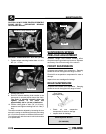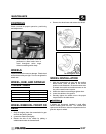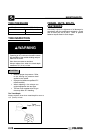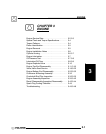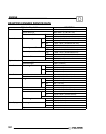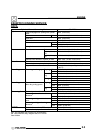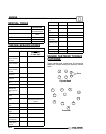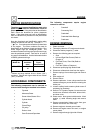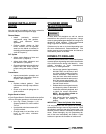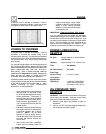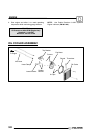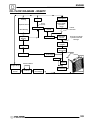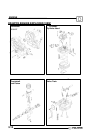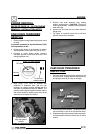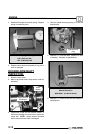
ENGINE
3.6
ENGINE INSTALLA
TION
NOTES
After the engine is installed in the frame, review this
checklist and perform all steps that apply.
General Items
G Install previously removed
components using new gaskets,
seals, and fasteners where
applicable.
G Perform regular checks on fluid
levels, controls, and all important
areas on the vehicle as outlined in
the daily pre-ride inspection checklist
(refer to Chapter 2).
PVT System
G Adjust center distance of drive and
driven clutch. (Chapter 6)
G Adjust clutch of fset, alignment, and
belt deflection. (Chapter 6)
G Clean clutch sheaves thoroughly and
inspect inlet and outlet ducts for
proper routing and sealing. (Chapter
6)
Transmission
G Inspect transmission operation and
adjust linkage if necessary. Refer to
Chapter 2 and Chapter 8.
Exhaust
G Replace exhaust gaskets. Seal
connections with high temp silicone
sealant.
G Check to be sure all springs are in
good condition.
Engine Break In Period
4 Cycle Engine Break-In Period is defined as the first
10 hours of engine operation or 2 full tanks of fuel.
G Use only Polaris Premium 4 All
Season Synthetic Oil, or API certified
“SH” oil.
G Use fuel with a minimum octane of 87
(R+M)/2 method.
G Change break-in oil and filter at 20
hours or 500 miles, whichever
comes first.
CYLINDER HONE
SELECTION/HONING
PROCEDURE
CAUTION:
A hone which will straighten as well as remove
material from the cylinder is very important. Using a
common spring loaded glaze breaker for honing is not
advised for nicasil cylinders. Polaris recommends
using a rigid hone or arbor honing machine.
Cylinders may be wet or dry honed depending upon
the hone manufacturer’s recommendations. Wet
honing removes more material faster and leaves a
more distinct pattern in the bore.
HONING T O DEGLAZE
A finished cylinder should have a cross-hatch pattern
to ensure piston ring seating and to aidin the retention
of the fuel/oil mixture during initial break in. Hone
cylinder according to hone manufacturer’s
instructions, or these guidelines:
G Use a motor speed of approximately
300-500 RPM, run the hone in and
out of the cylinder rapidly until cutting
tension decreases. Remember to
keep the hone drive shaft centered
(or cylinder centered onarbor) andto
bring the stones approximately 1/2²
(1.3 cm) above and below the bore at
the end of each stroke.
G Release the hone at regular intervals
and inspect the bore to determine if
it has been sufficiently deglazed, and
to check for correct cross--hatch.
NOTE: Do not allow cylinder to
heat up during honing.
G After honing has been completed,
inspect cylinder for thinning or
peeling.
IMPORTANT: Clean the Cylinder After
Honing
It is very important that the cylinder be thoroughly
cleaned after honing to remove all grit material. Wash
the cylinder in a solvent, then in hot, soapy water. Use
electrical contact cleaner if necessary to clean these
areas. Rinse thoroughly, dry with compressed air,
and oil the bore immediately with Polaris 4 Cycle
Lubricant to prevent the formation of surface rust.



